Everyone probably heard of sake, a traditional Japanese alcoholic beverage made of rice. But do we know anything except that? Hardly we do. Moreover, people, when discovering this drink, often become curious about the taste of sake. Does it taste like rice? Or more like vodka (since it is often called rice vodka)?
Today we will explain every single aspect regarding not only the taste of this drink but also its history and consumption.
What Is Sake? Complicated Question Answered Simply
Indeed, what is it? Those of us who are a bit familiar with Japanese culture would probably answer something like “rice vodka”, and would be wrong.
Those who would say that sake, a traditional Japanese alcoholic beverage, is in fact a rice wine, would be somewhat closer to the truth, but still not quite accurate! So what is it?
Sake has been made in Japan for centuries by now. It is produced by fermenting the polished rice, and it is indeed referred to as “rice wine” by the Japanese people.
Why can’t we call it the wine then? Well, when the wine is produced, alcohol is received by fermenting sugar (that is naturally present in grapes or other fruits the drink is made of).
On the contrary, the procedure of sake manufacturing involves brewing when starch is converted into sugars that later are fermented into alcohol. This is why sake in fact is more related to beer!
What does sake look like? Usually, it is a clear and transparent liquid, someone would even say it looks like water. However, at the first stage of production, the beverage has a lovely amber-yellow tint that is later removed by filtering the drink with the activated charcoal to achieve that transparency.
How And When It Appeared
In fact, this question can’t be answered clearly. The first historical records that mention sake date back to the period of 551 to 554 when this beverage is mentioned in a Book of Wei. However, it can’t be said clearly whether that drink was the sake we know today since even in a modern-day Japan the word “sake” refers to any alcoholic beverage, in fact!
Whatever it was, this drink was not usually used for the daily consumption. Sake was a ceremonial drink served at the temples, it was a popular beverage at the royal court, and of course, an irreplaceable part of the famous Japanese drinking games.
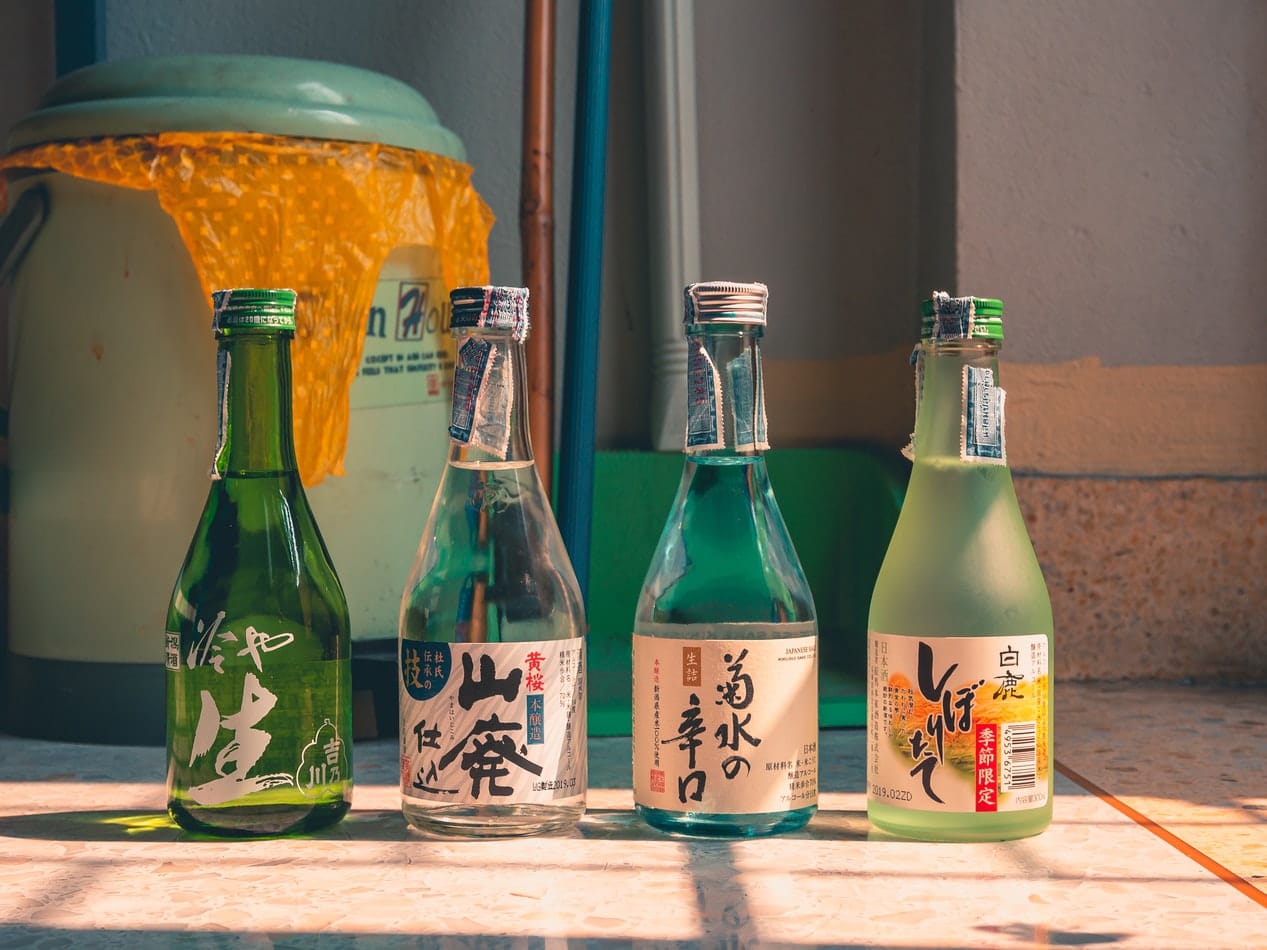
Until the 10th century, the manufacturing of this drink was a government monopoly, but after the 10th century, temples and shrines started brewing their own drinks. Later, home-organized breweries appeared all over the country turning sake into a truly national drink. Today, home-brewing is forbidden by the law and the sake-making industry is slowly decreasing.
Sake. Dry vs Sweet
Since sake is often referred to as wine, people tend to keep on asking: can sake be also sweet or dry as the wine is?
Well, even though this beverage is technically not wine (as we already found out), it is still divided into distinct categories of sweet and dry sake. However, be prepared that even the sweet kind of the drink will never be the same sweet as the dessert wine we are all used to.
So how to understand what you are buying or what you should expect from the drink offered to you? Let’s start with the general rule: any sake will have that slightly sweet hint (regarding the wine, we would call it off-dry). Sweeter or dryer variations would lean to either end of the spectrum from that starting point.
Since the level of alcohol, the acidity, and even the flavor will influence the sweetness significantly, very aromatic beverages will taste sweeter than their less flavorous counterparts.
Usually, the dry beverage will be stronger, with the higher alcohol content, and basically less sweet. On the contrary, sweet sake is less strong.
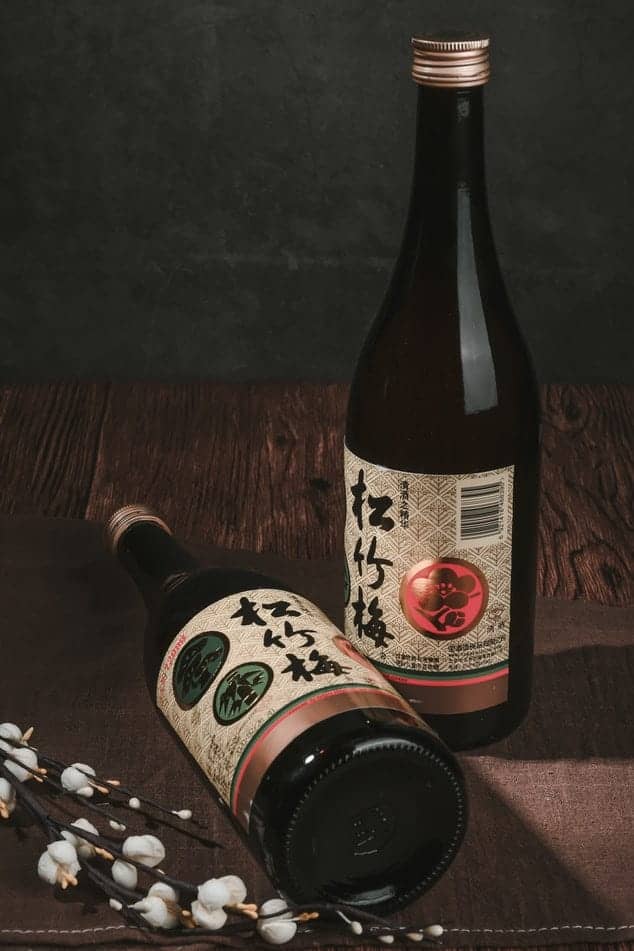
One tricky fact exists about this drink and it is about the taste and flavor. Western people might have thought that the more aromatic and sweet the sake is the less alcohol it contains, however, this is not always true! Dry rice wine can also be rather aromatic and even sweet!
Consider this when ordering some sake next time.
Is Sake a Good Thing?
Nowadays alcohol consumption has become a great point of concern in many Western countries. Some people assure that beverages are no harm if consumed reasonably, others warn that drinking, no matter how often or how much, will have a constant negative effect on our health.
What about sake? Can it also be called a threat? Eventually, Japanese folks take a sip quite often (some even do it every day after the stressful working time), and nobody could say that they have poor health! In fact, Japanese people are known to be among the healthiest nations in the world.
In terms of safety, we need to say at once that no beverage can be used as a way to relieve the stress or to sleep better. Any emotional or health issues must be discussed with the doctor to be able to find the safer ways of fixing them rather than getting slowly drunk.
However, taking a sip of this Asian drink now and then may have certain beneficial effects:
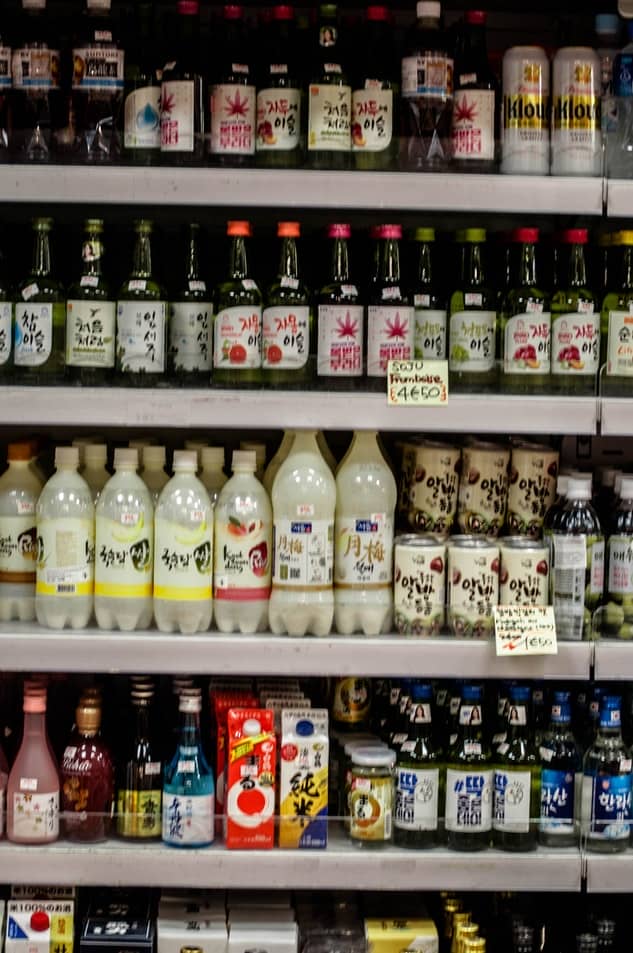
- Sake is a heart-safe beverage
- It has no sulfates and tannins which means you will have no nasty headache even when drinking too much (maybe, that’s why Japanese don’t get actually drunk?)
- It contains no chemical additives, of course, if we mean real drink, which excludes any unwanted stuff in your body
However, if you have any medical restrictions regarding alcoholic drinks, better don’t try sake at all, or consult with your doctor for permission.
Can It Spoil?
Probably, the major issue that bothers anyone who is interested in trying this drink is whether sake spoils. Nobody would like to buy an expensive bottle of beverage that can turn bad too soon!
Unfortunately, it spoils, and we can suggest what to do to spot the off drink. Since defying that just by looking at it is impossible, give it a try. If any taste or aroma changes are noticed that make you doubt the quality of the beverage, it is better to be discarded.
To avoid that scenario, keep this treasure in a pantry away from the direct light, humidity, and heat if it is not opened yet.
If the bottle is already uncorked, refrigerate it and try to consume before the expiry date arrives.
Japanese Sake Alcohol Content

Does sake have alcohol? Strange question since, of course, it does. Normally, the undiluted drink will have between eighteen to twenty percent alcohol which is even higher than in the wine. However, since the beverage is mostly diluted with water prior to bottling, this number goes down to fifteen percent.
In case you are familiar with the Japanese drinking tradition, you may ask whether the alcohol content differs in warmed and in hot sake.
Indeed, originally, sake was served slightly warmed, but today, after changing the production procedure and techniques, this drink is better to consume slightly chilled (not too much, however, otherwise, the taste and aroma will not be revealed fully).
In terms of alcohol level, the warm sake alcohol content will decrease compared to the unheated drink. The hot sake alcohol content will be even lower.
How to Warm Up Sake
If you want to add some Asian fleur when serving sake, try to warm it a bit prior to consuming. Remember that warmed drink will taste more “dry”, moreover, it is better to heat up the more acidic sorts of the drink since they will win from this procedure in terms of taste and aroma.
- Pour the drink into a bottle with a tall neck and open mouth. Don’t make it be filled to the rim, otherwise, the expanded beverage will burst out.
- Boil some water in a saucepan. It must be enough to cover ¾ of the sake tank. Once it starts rolling, turn the fire off, and immerse the bottle in it.
- A bottle must be warmed for up to three minutes uncovered.
Serve the drink instantly while it is still warm. Warm sake is perfect to accompany cold and plain foods and the goodies with soy sauce in them.
A hot beverage will be better for warmer meals and more fatty foodstuffs.
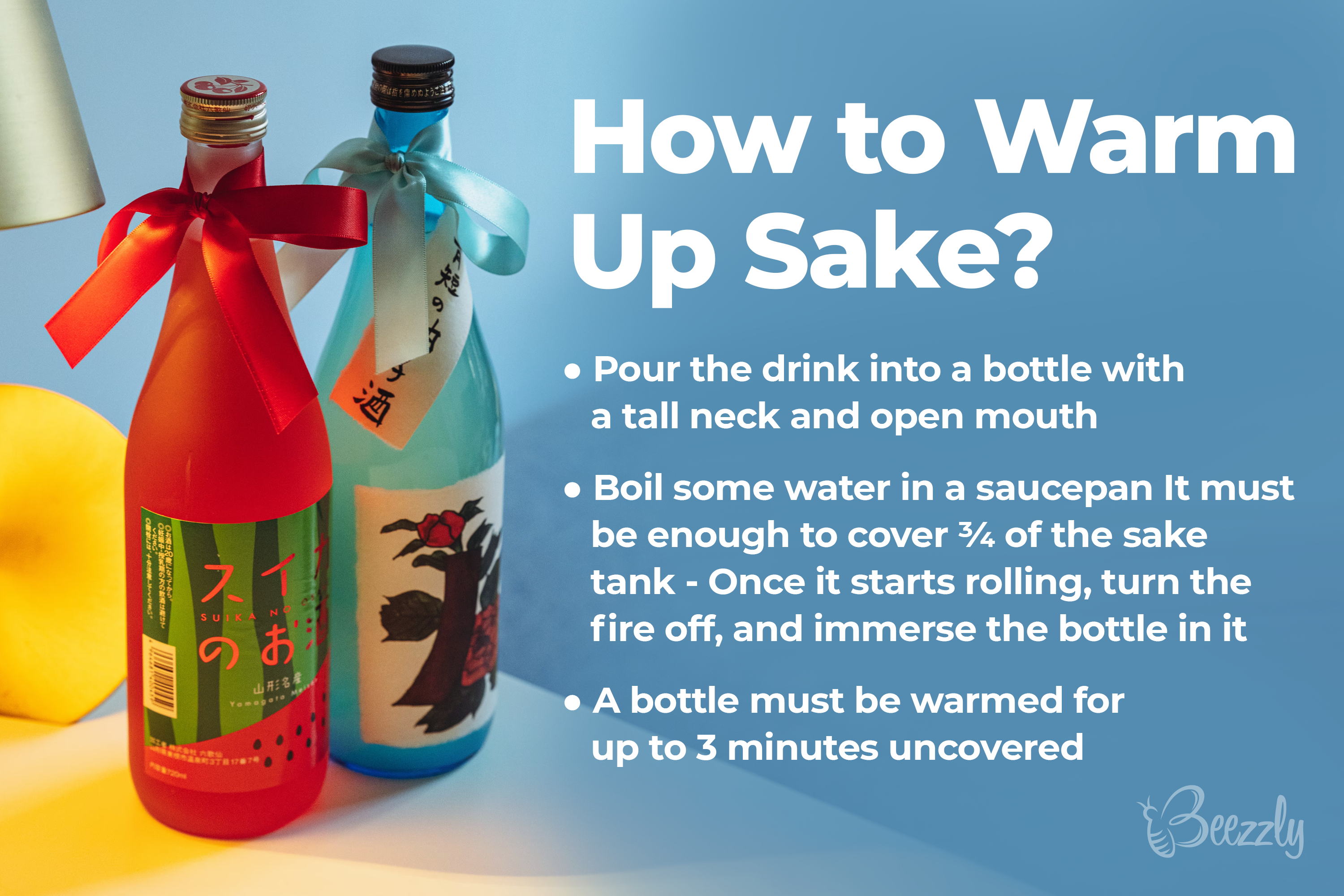
How to Consume It Like a Local
Let’s consider the undoubted fact: Japanese culture is tricky, and it is tricky in all aspects: art, religion, fashion, foods…and drinking.
What do Western folks usually do when meeting with each other to take a glass of wine? Right, they just go to the bar and order a drink! No ceremonies, no special rituals, you just pour the beverage into the glass and enjoy it.
Is that the same in Japan? No. Is it how sake is supposed to be consumed? No again.
Like almost everything we see in this mysterious country, the consumption of sake is not as simple as it seems.
To serve and drink it like a truly seasoned drinker, remember to complete the following steps:
Don’t drink it as a shot
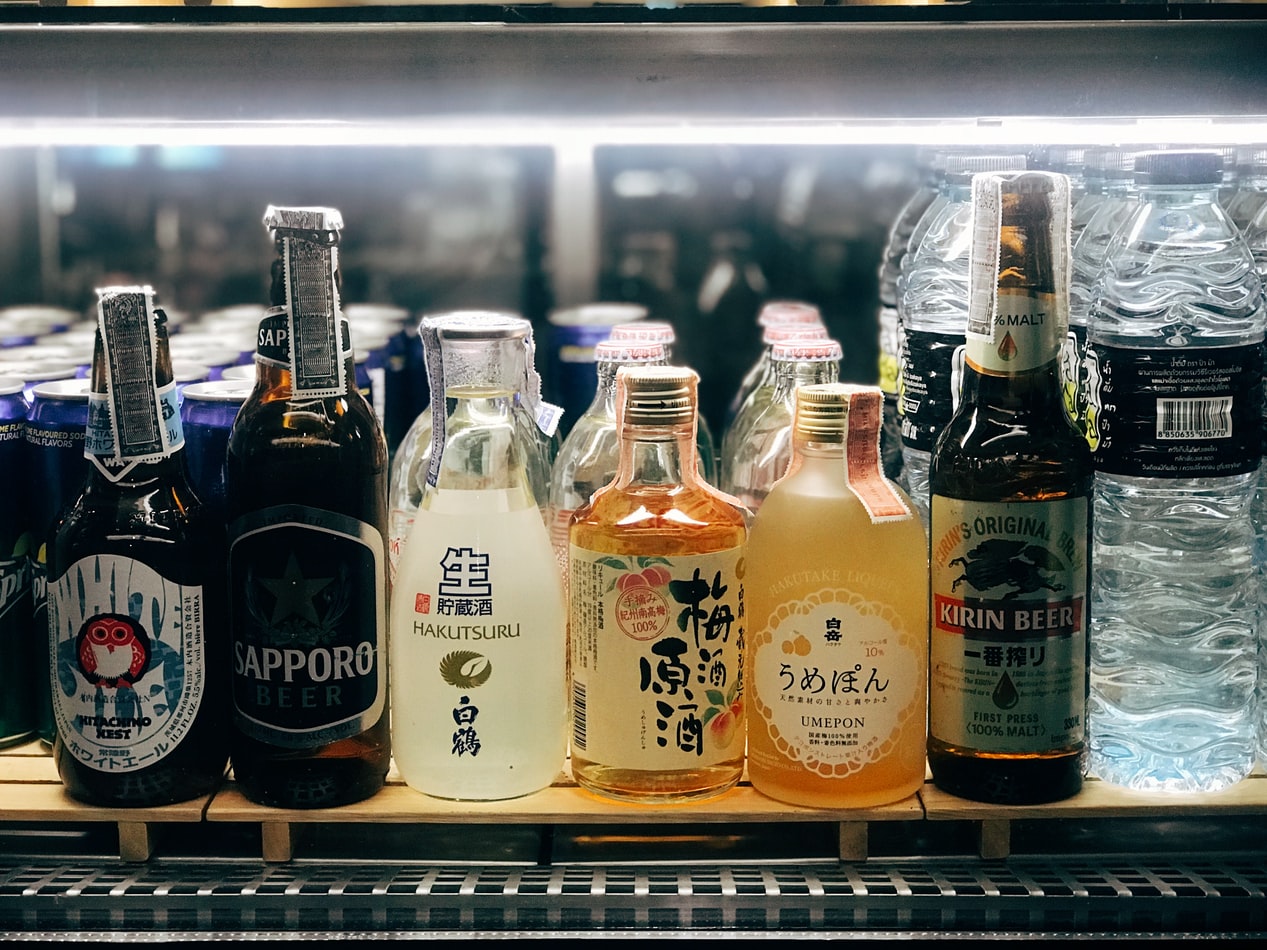
Sake was initially a ceremonial drink that was supposed to be taken in small sips slowly to show respect to the gods and spirits of the shrine or temple. Of course, we don’t think anyone would go to the nearest church to drink sake, but using small cups has another, not only ritual, meaning.
When being consumed slowly in small amounts, sake reveals its taste and aroma much better than if we swallow it like a tequila slammer.
Warm it, heat it up, or drink chilled
Is sake supposed to be hot or cold? Moder sake can be consumed in any of the listed ways. Unlike its initial “ancestor” that had to be warmed, the modern drink mostly tastes perfectly well being unheated.
However, consider that certain sorts of it will have a way better and richer flavor when immersed in a warm “bath” for a minute or two prior to serving!
Don’t forget about the appetizers
Sake is never consumed without some small snacks. In fact, it can even accompany a sushi set. Nevertheless, remember that some sorts of it will fit warm foods better than cold appetizers.
How Does Sake Taste?

Finally, the most thrilling moment arrived! What is the taste of this rice beverage? Those who have never tried it might think it tastes like rice since this is what the drink is made of. However, this is fortunately not true.
The sake drink taste varies, of course, hanging upon its alcohol content, acidity, and other factors. Also, the temperature of the served drink can influence the sake flavor.
Is sake sweet? Yes and no. All sorts of this drink have in fact the slightly sweet note that is barely sensed. Less alcoholic sorts are usually sweeter whereas the stronger beverages tend to be almost non-sweetened.
The drink usually has pleasant caramel, nutty, or fruity aroma that is not so intense as the scent of wine though. However, except for these basic scents, sake can have many others from the well-known fruity ones like apple, pear, or melon to spicy clove, fenugreek, or nuts, and even buttery and cheesy!
Stronger sorts will have a dryer taste while less alcoholic beverages will be more sweety and delicate. The taste is usually mild, balanced, and delicate in general being more revealed after the warming.
We tried to do our best to explain the taste of sake to you. Now that you know more about its history and origin, its drinking traditions, and the way of serving, we hope that enjoying this exotic drink will become an unforgettable experience, and you will be able to find a perfect match for yourself among the wide variety of sake sorts.
[wp-faq-schema title=”Frequently Asked Questions”]
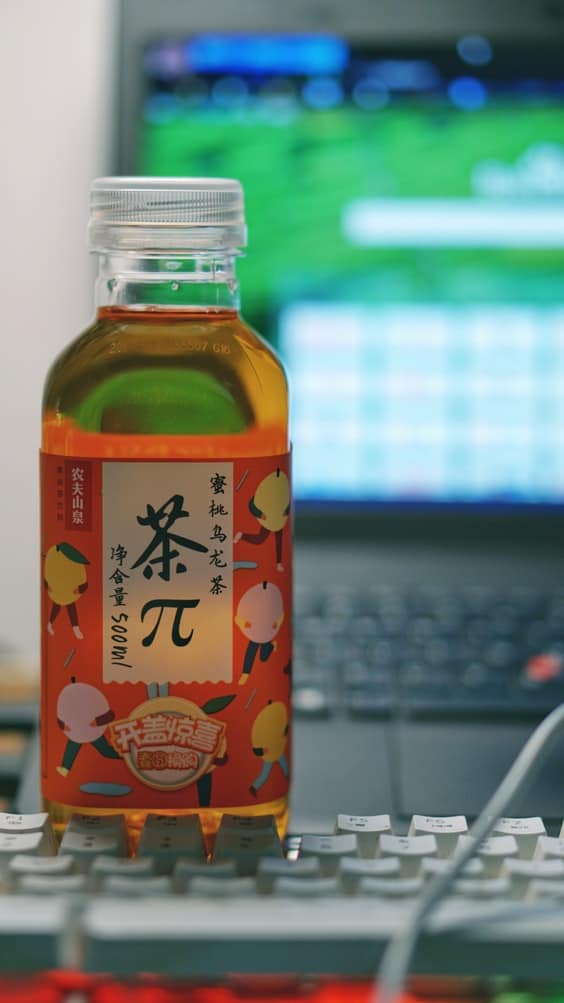
Is sake the healthiest alcohol? Can it cause the same symptoms as other beverages do e.g. headache and liver problems?
Well, as far as I know, when consumed reasonably, in small amounts, and seldom, it can even be healthy. But of course, if we drink it heavily, the effect will be the same as from any other alcoholic stuff.
I’m trying to figure out where to keep a bottle of sake I was given as a present. Does sake go bad in the fridge? Does anyone know?
Ifthe bottle is still unopened, place it to the pantry away from light. When opebed, transfer it to the fridge. But anyway, the drink will spoil if kept too long or improperly, no matter where you keep it.
Is sake considered hard liquor or wine?
Well, I don’t think so. Sake’s alcohol content is about 15% which is not enough to call it hard liquor.
Can old sake make you sick? The drink tastes and smells fine but I’m still not sure whether to drink it or not.
No, as far as I know, old sake won’t make you sick if it was stored properly. The taste and flavor willl degrade but it won’t kill you for sure.